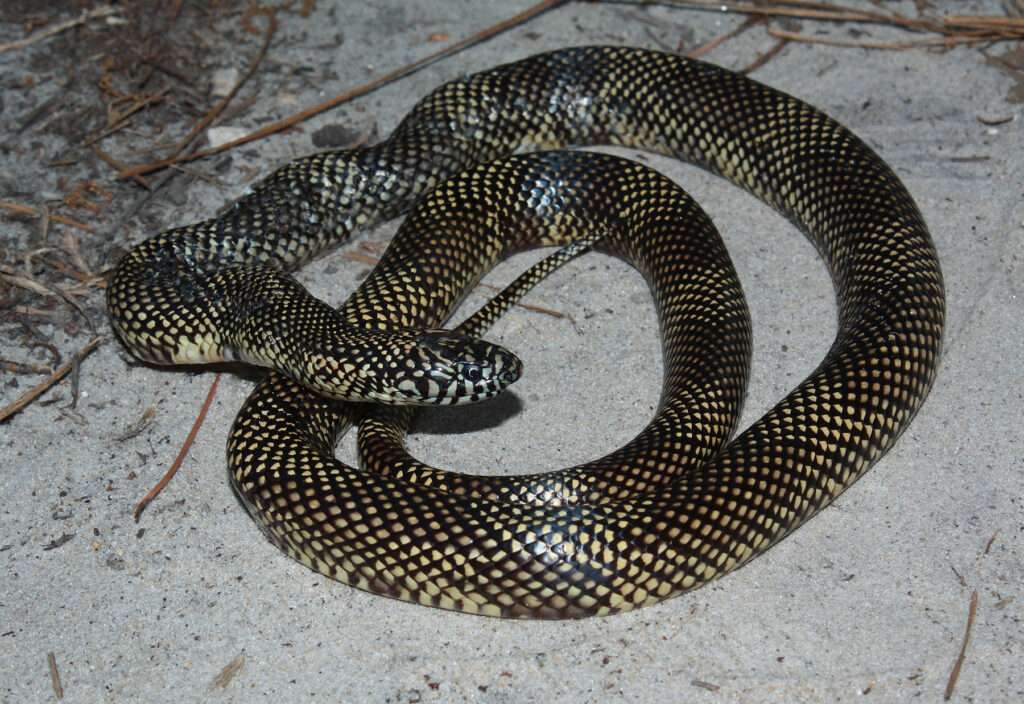
Description:
Scientific name: Lampropeltis getula meansi
Life span: 15-20 years
The Apalachicola kingsnake, also called the Apalachicola Lowlands kingsnake, is a type of non-venomous colubrid snake that can only be found in the Apalachicola Lowlands, a tiny region of the Florida Panhandle. Variable banding patterns and a pale overall dorsal coloring are what distinguish them from other species. There are also known examples of striped and patternless individuals. Moreover, the ventral pattern varies, with some having bicolored, loose checkerboard, or mostly dark scales. They have 21 rows of smooth dorsal scales at the mid-body.

Native Region/Habitat
The Apalachicola kingsnake is endemic to Florida and is only present in the panhandle, south of Telogia Creek, between the Apalachicola and Ochlokonee rivers. Both the northern and southern ends of the range contain transitional morphology. Its habitat requirements vary, but their distribution is rather constrained. Pinelands, hardwood hammocks, cypress strands, prairies, marshes, and estuaries are all parts of their habitat.
Behavior:
They are aggressive towards other snakes and reptiles but are subdued near people. Although non-venomous Apalachicola Kingsnakes are not harmful to people or animals, they may bite on occasion in self-defense. These snakes stay far away from people and animals. Almost all bites happen when people purposely annoy snakes.
Apalachicola Kingsnakes generally run for cover when confronted. When cornered, though, they might attack the aggressor while rapidly vibrating the tip of their tail, which creates a buzzing sound. They may bite and gnaw while producing a pungent odor from a pair of glands at the base of the tail if they are seized or pinned. These snakes are not aggressive, though, and they rarely bite.
Care As a pet/In captivity:
They are docile by nature, and many households keep them as pets because of this. Nonetheless, there are differences in disposition between subspecies. There have been cases when, after receiving the correct training, they have proven to be excellent house pets.
- The Apalachicola kingsnake is extremely active and inquisitive, as are other king snakes. As a result, we advise using enclosures with a minimum size of 120 x 60 x 60 cm (4 x 2 x 2ft).
- This species should have a warm end or basking temperature between 30-32°C (86-89°F) and a cool end between 22-25°C (71-77°F). To achieve these temperatures, one end of the enclosure should have an overhead heating system installed, such as a basking lamp and dimming thermostat or ceramic heater and pulse thermostat.
- Natural prey for Apalachicola king snakes would include a variety of snakes, including venomous ones, lizards, amphibians, rodents, birds, turtles, and eggs. As many of these things are difficult to find in captivity, Kingsnakes typically eat frozen reptile food, primarily mice. After your snake is large enough, you can also introduce rats, chicks, and other feeder animals.
Table





